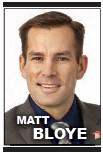By Matt Bloye
The last Saturday in May is known as National Fitness Day. This day is set aside to recognize the importance of physical fitness in changing lives.
However, financial fitness can also be just as important for changing lives in Salt Lake City. For example, some people may think simply having a positive checkbook balance after the bills are paid each month is financial fitness. For others, the goals are more ambitious — summer road trips, new cars, comfortable retirement — the financial fitness equivalent of six-pack abs.
Just as regular exercise and a good diet are essential for physical fitness, budgeting and planning are essential for financial fitness. Even if you’re a monetary couch potato, these steps can help you flex your financial muscles. Start now and soon you’ll be well on the road to financial fitness.
Set goals. Write down your goals: down payment on a home, college education for the kids, paying off credit card balances. Include short-term goals, such as saving for a summer road trip, because early success can encourage you to stay in it for the long term.
Review Expenses. Add up all your expenses — receipts, checkbook entries and credit card purchases — for at least a month. Make two lists of expenses: essentials such as mortgage/rent, taxes, food and insurance and non-essentials (or at least more flexible costs) such as entertainment and clothing. You may be surprised at how much you’re spending on the non-essentials.
Make a plan. Be specific about the amount you’ll need and the target date for reaching each goal, then set up a savings plan that will get you there.
Cut costs. How can you save when you spend every dime to meet expenses? Look again at those costs. You could find considerable savings, even for “fixed” expenses. Talk with a home mortgage consultant about your mortgage. With low interest rates in Salt Lake City, you could reduce monthly payments and possibly pay off other debts by refinancing or obtaining a home equity loan.
You don’t need to live like a miser to trim dollars from your monthly expenses, but you do need to pay attention to every purchase and avoid impulse buying. Remember, the little things add up — a matinee instead of the full-price movie, home cooking instead of a dinner out, garage sale furniture finds, seasonal sales on clothing. Each time you save a few dollars, put the equivalent cash into savings. You’ll be surprised how quickly it adds up.
Start saving. Start now, even if it’s just a few dollars a week. Ask your personal banker about direct-deposit accounts that move money straight to savings.
Keep track. Purchase personal finance software that allows you to track income and spending. This software is great at tax time — no more sifting through shoeboxes stuffed with receipts — and it can help you reduce taxes by keeping track of every deductible expense. Consider online banking and bill payment, which allows you to set up automatic payments for recurring expenses. With many online services, you can download transaction records directly to personal finance software, making it even easier to keep monitor your costs.
Be flexible. Treat yourself to small splurges once in a while and don’t be discouraged if an unexpected expense throws you off budget one month. You’re in this for the long haul.
Matt Bloye is the Wells Fargo Utah Region bank president.








